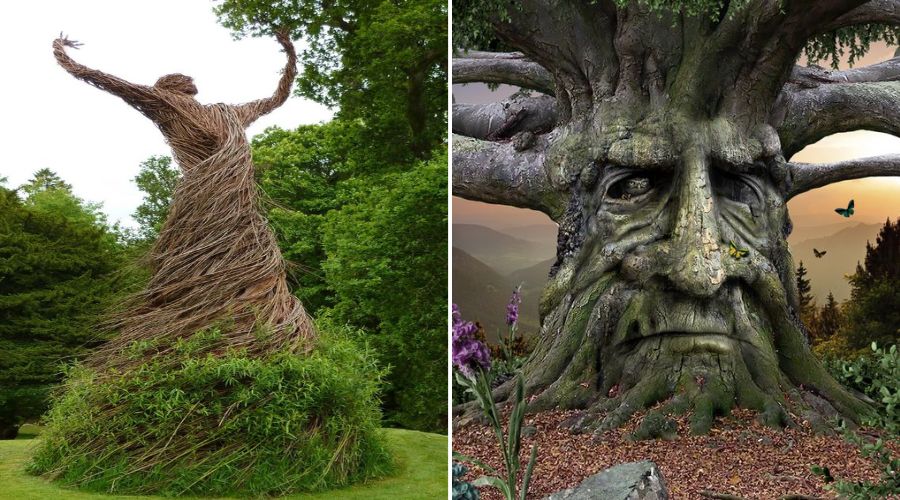The emergence of rare axolotl morphs is a result of us tweaking nature.

Image credit: Courtney Bailey/Goldfisj
Axolotls have fascinated the international public ever since they were first brought to Paris from Mexico in 1864. Europeans across the continent began breeding these salamanders, marking the beginning of an extensive pet trade in the animals, which breed easily in captivity. Eventually, as axolotls were becoming more and more popular, some owners started to notice something strange: their pets spontaneously morphed from an aquatic animal into a terrestrial one.
A blog posted to Imgur by Courtney Bailey (aka @SalamanderWithASign) details the transformation of her axolotl named Gollum. Although Bailey had been aware of rare axolotl morphs, she never expected to witness the change first-hand.
“This is what Gollum looked like when I bought him. He was your classic axolotl. Webbed feet, fluffy gills, and a cute little smile. As with all axolotls, he was supposed to remain aquatic for his entire life,” one post reads. “Gollum did not get that memo.”

Gollum before the transformation. Image credit: Courtney Bailey/Goldfisj
“One day I noticed that he was looking really ‘sick.’ I quarantined him from his tankmates and within a week, he looked like the above picture. No gills, no webbed feet, and he didn’t want water anymore at all.”
“This is incredibly, very, very rare.”

Gollum seven days into becoming an axolotl morph. Image credit: Courtney Bailey/Goldfisj
But how is that possible at all? Well, that’s where humans come into the picture. Firstly, axolotls are critically endangered in the wild because of habitat degradation. They once inhabited the high-altitude lakes around Mexico City, but now only a handful of them survive in a few inland canals in the area.
Secondly, as axolotl expert Dr Catherine McCusker from the University of Massachusetts Boston told IFLScience, all captive axolotls around the world today originate from as few as six individuals. And since inbreeding carries a lot of risks – as the many breed-specific health problems of domestic dogs demonstrate -, breeders tried to increase their genetic diversity and make the axolotls healthier by hybridizing captive specimens with tiger salamanders, a close relative.

The tiger salamander is a close relative of the axolotl. Image credit: Carla Isabel Ribeiro
Originally, axolotls are paedomorphic salamanders, meaning they retain all of their juvenile, tadpole characteristics for life, as their bodies don’t produce the necessary hormones that give their bodies the message to “grow up.” For this reason, they are never supposed to lose their gills and fins and leave water like other amphibians, including tiger salamanders, which transition from tadpole to terrestrial.
For some reason, Gollum got the signal from his thyroid to change into a terrestrial salamander – and that reason is the above-mentioned cross-breeding. By hybridizing the axolotl with the tiger salamander, humans created a critter with several options in their later life wardrobe. Some will remain aquatic axolotls, while others eventually make the shift to become rare axolotl morphs – something that’s probably somewhat confusing to the unresearched pet owner.
“The first most obvious change is that their gills begin to regress,” said McCusker, who studies axolotl regeneration. “Once that is completed, they can no longer breathe underwater, and must be provided with ‘terrestrial’ material to crawl around on.”

Rare axolotl morphs see their external gills turn to air-breathing, internalized lungs, and their skin changes dramatically. Image credit: Courtney Bailey/Goldfisj
Gollum, too, absorbed his gills and fins and started using lungs to breathe. He even grew eyelids and a tongue.
“There are also many changes that happen to their skin to adapt to their new habitat,” McCusker explains. She is currently studying limb regeneration using Mexican axolotls as a model. Rare morph axolotls lose some of their regeneration skills, but those who retain their paedomorphic state are masters of regrowing full limbs.
As for Gollum’s owner, her experience with her pet’s transformation has made her determined to be an advocate for rare axolotl morphs, who are very difficult to care for owing to the lack of available information online. Therefore, Bailey has shared her own tips on axolotl morph care and the quest continues.
Axolotl morph care is not easy. Video credit: Courtney Bailey/Goldfisj
“I’ve been talking to an expert on the matter who has successfully kept morphs for 10+ years. He says that with proper care, Gollum will likely live out a full life. The issue with most people is that they just don’t know how to care for the animals properly […] I want to share him with the world. I want to document how I care for him so that others can follow suit and expand the lifespan of their own morphs.”
In the name of all axolotl owners and animal lovers, we really appreciate the effort.
Sources: 1, 2, 3



